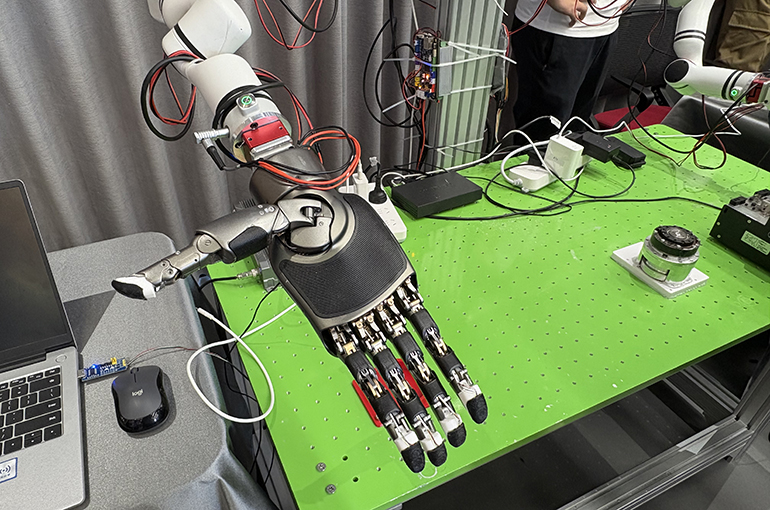 China's Fulai Releases New Electronic Skin for Robots
China's Fulai Releases New Electronic Skin for Robots(Yicai) June 6 -- Fulai New Material, a Chinese manufacturer of multifunctional coating composite films, has launched its next-generation tactile sensing system, or electronic skin, for robots to improve sensory interaction.
The second-gen electronic skin, released yesterday, can be integrated with a robot's hardware to give it multiple dimensions of force and temperature perceptions through touch, according to the Shanghai-based company.
The new tactile sensing system was applied to the tip of a robot's dexterous fingers at Fulai's factory in Jiashan, Zhejiang province, Yicai saw at the plant. The skin is made of flexible black silicone with a pattern resembling a human fingerprint and a touch similar to that of a person.
The team used a flexible thin film preparation process to make the new flexible tactile sensor, said Chen Shuting, chief scientist of Fulai. "The new process can ensure that the electronic skin fits a variety of complex surfaces, including three-dimensional geometries such as cylindrical and spherical surfaces."
Despite the new product, shares of Fulai [SHA: 605488] closed down 3 percent at CNY34.08 (USD4.74) apiece today. The broader Shanghai stock market ended slightly changed.
A more diverse signal input lets the robot's large language models make more accurate judgments at the perception level, giving machines more opportunities to operate in complex and open scenarios, including precision parts operation, surgery, and home environments.
The founder of a Beijing-based robot manufacturer that was considering equipping a depth camera to the dexterous hands of his self-developed robots to assist in precise operation previously told Yicai that " the best solution is to add tactile sensors to the fingertips, palms, and other large contact areas so that signals are more direct and more anti-interference."
However, because the available flexible tactile sensors at the time were unsatisfactory in terms of fit, responsiveness, and price, the company would wait until a suitable solution emerged, the person pointed out.
Global demand for flexible tactile sensors in the humanoid robot field will top around 1.5 million square meters by 2030, with the market reaching CNY27.4 billion (USD3.8 billion), according to a forecast by GGII.
Editor: Martin Kadiev